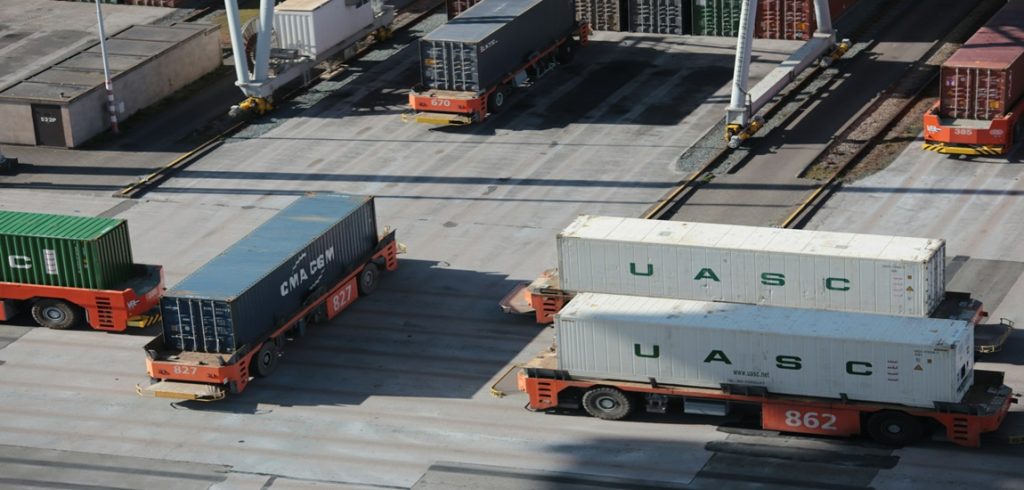
Pic Courtesy - UnSplash
The integration of Artificial Intelligence (AI) in transportation and logistics ushers in a new era of efficiency and optimization, altering existing methods. From optimizing transportation routes to enabling real-time monitoring, AI is transforming the landscape of this critical business.
Let’s look at the five main ways AI is transforming transportation and logistics.
1. Optimizing Transportation Routes : One of the most significant benefits of AI in transportation is its capacity to optimize routes. AI systems may determine the most efficient routes for vehicles by analyzing massive amounts of data such as traffic patterns, weather conditions, and historical transit times. This not only shortens travel time, but also saves fuel consumption and pollutants. Companies can use AI-powered route optimization to improve operations, meet delivery schedules, and increase customer satisfaction.
Case Study: Maersk, a multinational shipping company, collaborated with IBM to apply artificial intelligence to optimize container ship routes. AI uses weather patterns, sea conditions, fuel consumption, and port congestion to determine the most effective route in real time. This has cut CO2 emissions by 1.5% while saving Maersk millions of dollars on fuel costs.
2. Aids In Fleet Management : Fleet management is another area where AI excels. AI can identify equipment faults before they occur, allowing for preventive maintenance and reducing downtime. Furthermore, AI can maximize vehicle use by dynamically distributing resources based on demand, resulting in increased efficiency and lower operational costs. By delivering real-time insights into fleet performance, AI enables businesses to make data-driven decisions and preserve a competitive advantage.
Case Study: UPS, a renowned parcel delivery provider, use AI-powered telemetry to track vehicle health and anticipate repair requirements. This helps to avoid malfunctions and optimize maintenance schedules, lowering downtime and expenses.
3. Enhances Efficiency : Efficiency is at the heart of successful transportation and logistics operations, and AI acts as a catalyst to improve efficiency throughout the supply chain. AI automates and makes intelligent decisions to streamline processes like order fulfillment, inventory management, and warehouse operations. By automating repetitive processes and eliminating manual errors, AI allows human resources to focus on more strategic activities, supporting organizational innovation and growth.
Case Study: Amazon, the e-commerce behemoth, uses artificial intelligence in its warehouses to automate processes such as item picking and packing. This improves productivity, lowers errors, and helps Amazon to process orders more quickly.
4. Helps In Cost Reduction: Cost reduction is a common goal for firms in the transportation and logistics industries, and AI offers various potential in this area. AI assists businesses in dramatically lowering operating costs by optimizing routes, reducing fuel consumption, and increasing resource efficiency. Furthermore, AI-driven predictive maintenance reduces costly equipment breakdowns and increases asset lifespan, resulting in significant long-term savings. Companies may reduce costs and increase profits by embracing AI technologies.
Case Study: J.B. Hunt, a prominent trucking operator, uses AI to analyze truck capacity and match available goods to trucks on specific routes. This eliminates idle mileage and improves resource use, resulting in significant cost savings.
5. Facilitates Monitoring: Real-time monitoring is critical for guaranteeing the smooth running of transportation and logistics networks, and AI makes this possible through advanced data analytics and monitoring systems. Artificial intelligence allows for real-time tracking of shipments, vehicles, and assets by integrating sensors and IoT devices into vehicles and infrastructure. This not only improves visibility and transparency, but also enables businesses to anticipate and minimize possible disturbances or delays. Companies can use AI-powered monitoring systems to improve resource allocation, eliminate risks, and ensure that goods are delivered on time to customers.
Case Study: DHL, a transportation and warehousing behemoth, employs AI-powered video analytics to monitor warehouses for security reasons. This system detects suspicious activities in real time, hence increasing security and minimizing theft.
Some Limitations
It’s vital to highlight that AI deployment comes with problems, which include
· Data integration and quality: AI models require clean, well-integrated data to perform properly.
· Explainability and transparency: Ensuring justice and comprehending AI decision-making processes are critical.
· Upskilling workforce: Employees require training to adapt to changing technologies and stay relevant.
AI is transforming the transportation and logistics industries by optimizing routes, assisting with fleet management, increasing efficiency, lowering costs, and enabling real-time monitoring. As organizations use AI technologies, they stand to gain a competitive advantage by enhancing operational performance, increasing profitability, and providing greater customer experiences. The future of transportation and logistics belongs to those that use AI to drive innovation and transformation in this dynamic and critical industry.




More Blogs
Expanding Globally: Navigating Challenges and Leveraging Strategies
7 Ways of Making Progress: A Startup Expert’s Guide
AI in the Insurance Business: Revolutionizing the Industry